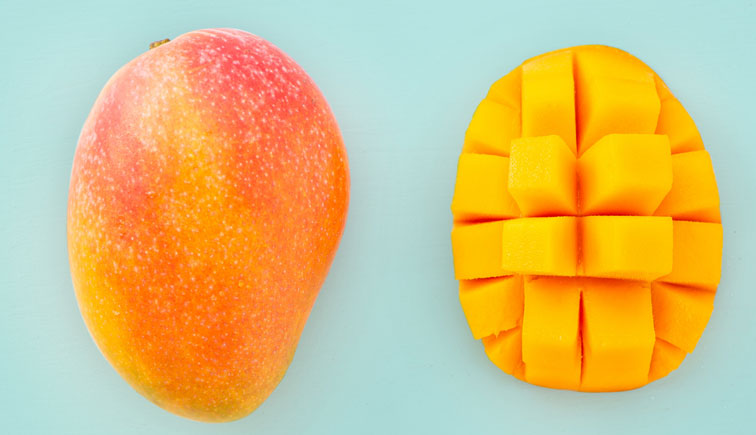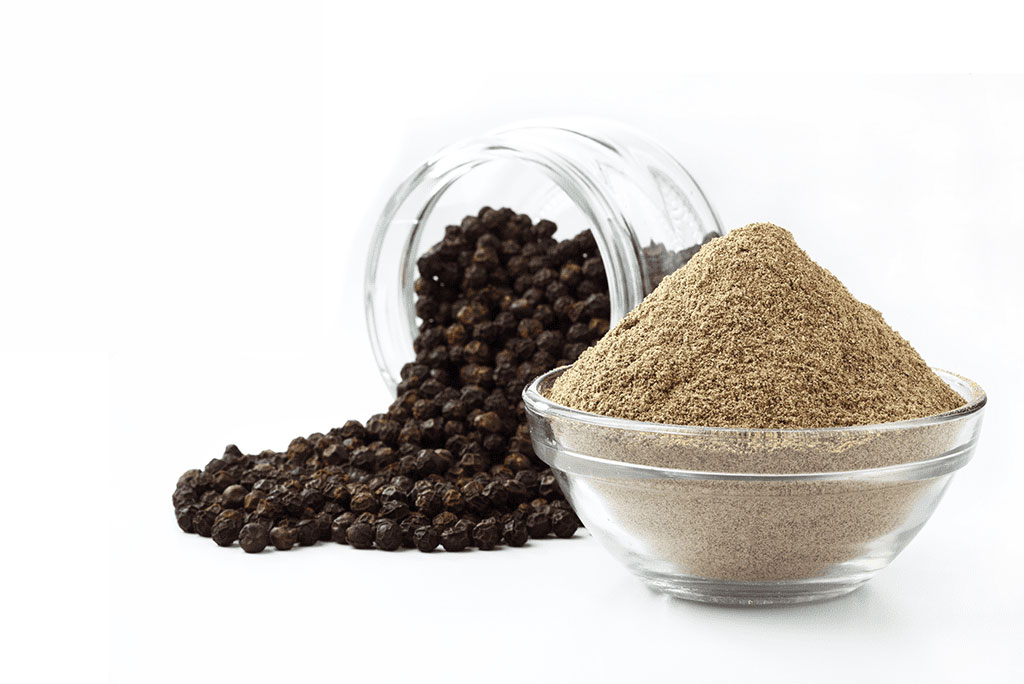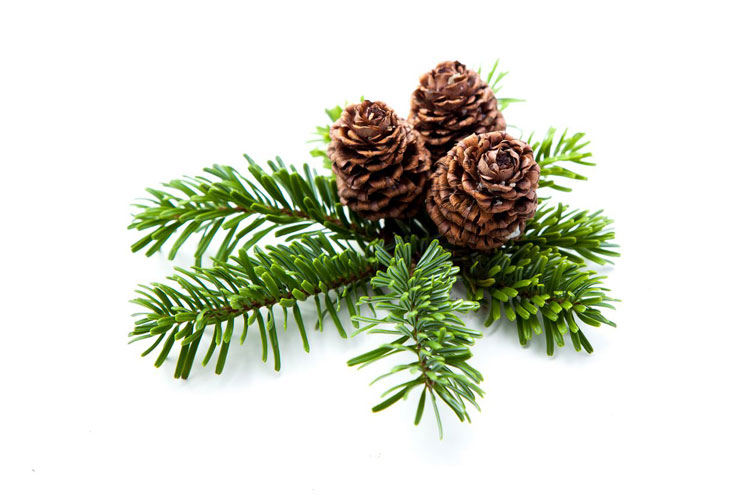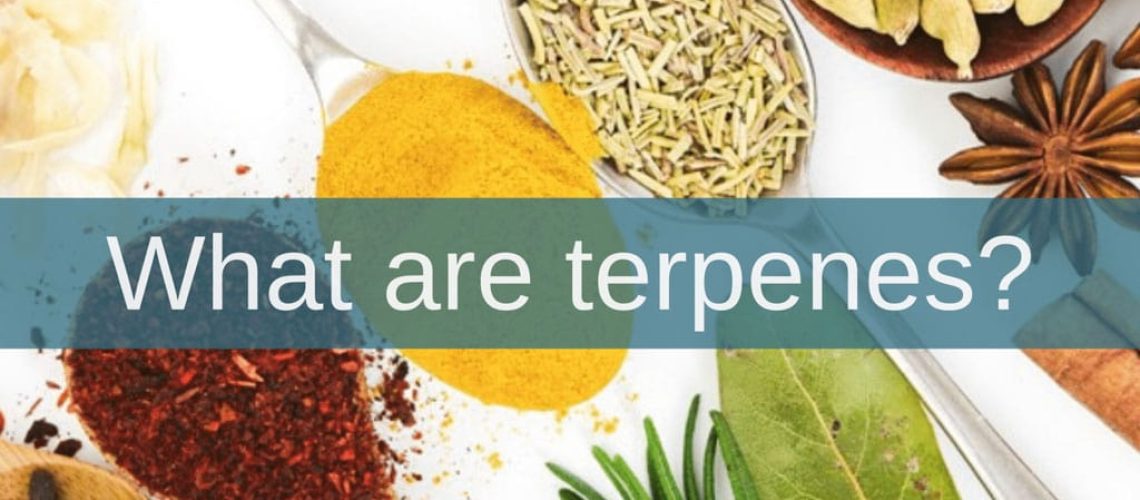The Cannabis plant is a very complex one made up of different cannabinoids, flavonoids, and terpenes. Terpenes are the aromatic oils responsible for imparting that specific odor to a plant or a fruit. For example, Limonene is a terpene present in oranges and lemons and gives that recognizable odor and flavor to them.
What are cannabis terpenes?
There are more than 200 identified terpenes in the cannabis plant and every strain tends to have a unique terpene profile. Terpenes can help the body destroy bacteria, detoxify, relax, and more. Some terpenes might promote stress relief and relaxation, while others potentially promote energy and focus.

Cannabis terpenes are synthesized in the trichomes and production is increased with light exposure. Unfertilized female cannabis flowers have the higher concentration of them.
Terpenes act on neurotransmitters and their receptors; they act as serotonin uptake inhibitors (similar to antidepressants like Prozac); they enhance norepinephrine activity (similar to tricyclic antidepressants like Elavil); they increase dopamine activity; and they augment GABA (the “downer” neurotransmitter that counters glutamate, the “upper”). However, we need to learn more before we can say with accuracy how is it that the terpenes in cannabis can help us and how much of them we need.
Many dispensaries now test terpene content, so you may have a better idea of what effects a strain might produce. With their unlimited combinations of potential synergistic effects, terpenes will certainly open up new scientific and medical terrains for cannabis research.
Myrcene

Supports sleep and reduced muscle tension, insomnia, and pain.
Smells: Clove-like with notes of citrusy fruit
Tastes: Sweet citrus
Found in: Thyme, fruits like mango, lemongrass
Myrcene, specifically β-myrcene, is the most common terpene produced by cannabis. Its aroma has been described as earthy, musky or herbal similar to cloves. A high myrcene level in cannabis (usually above 0.5%) is usually very sedating like the effects of classic Indica strains. Myrcene, which is found in oil of wild thyme, citrus fruits, bay leaves, eucalyptus, hops, lemon grass and many other plants can be an analgesic, anti-inflammatory, antibiotic and antimutagenic. Its relaxing and sedative effects also make it ideal for the treatment of insomnia and pain.
Strains: Grand Daddy Purple, Blue Dream, OG Kush
Limonene

Helps with depression, anxiety, reflux, and defense against free radicals.
Smells: Citrus lemon and orange
Tastes: Lemon and mint
Found in: Orange, juniper, lemon, peppermint and others
Varieties high in limonene have strong citrusy smells like lemons, limes and oranges. Strains high in limonene usually promote a general uplift in energy and mood. This citrusy terpene is the major constituent in citrus fruit, juniper, rosemary and peppermint, as well as in several pine needle oils.
Strains: Strawberry Banana, Dos-si-dos, Weeding cake
Linalool

Eases anxiety and inflammation. Supports motor control and pain management.
Smells: Floral with a hint of spice
Tastes: Coriander, Floral, Lavender, Lemon, Rose
Found in: Lavender, Mint, Cinnamon,
Linalool has been described as having floral and lavender undertones. Varieties high in linalool promote calming, relaxing effects so it has been used for centuries as a sleep aid. Linalool should help lessens the anxious emotions provoked by pure THC making it helpful in the treatment of anxiety. Studies also suggest that linalool can significantly reduce lung inflammation, can boosts the immune system; and can restore cognitive and emotional function (making it useful in the treatment of conditions like Alzheimer’s disease).
Strains: LA Confidential, Amnesia Haze, Zkittlez
β-Carophyllene

Helps defend against free radicals, insomnia, nerve pain, and inflammation.
Smells: Wood, cinnamon and cloves
Tastes: Hops and spices
Found in: Basil, all-spice, fig, black pepper, cinnamon
Beta-caryophyllene is found in many plants such as Thai basils, cloves, cinnamon leaves, and black pepper, and in minor quantities in lavender. Its aroma is usually described as peppery, woody, and/or spicy. Caryophyllene is the only terpene known to interact with the endocannabinoid system by selectively binding to the CB2 receptor and functioning as an agonist. Further, β–caryophyllene was identified as a functional non-psychoactive CB2 receptor ligand in foodstuff and as a macrocyclic anti-inflammatory cannabinoid in cannabis. Beta-caryophyllene is used especially in chewing gum when combined with other spicy mixtures or citrus flavorings.
Strains: Girls Scout Cookies, Sour Diesel, Chem Dog
Humulene

Suppresses appetite, aids with inflammation and pain.
Smells: Spicy and earthy
Tastes: Hops, pepper and spices
Found in: Coriander, basil, clove
Humulene is found in hops, Vietnamese coriander and cannabis sativa strains, among other naturally occurring substances. Humulene is what gives beer its distinct ‘hoppy’ aroma.
Humulene is considered to be anti-bacterial, anti-tumor, anti-inflammatory, and anorectic (suppresses appetite). It has commonly been used as a major remedy for inflammation specially when blended with β–caryophyllene Humulene has been used for generations in Chinese medicine. It aids in weight loss by acting as an appetite suppressant.
Strains: Gelato, Sherbet, White widow, Skywalker OG
Alpha/Beta Pinene

Eases asthma, supports memory, and destroys bacteria.
Smells: Pine forest and Rosemary
Tastes: Rosemary, cedarwood, pine
Found in: Conifer trees, rosemary, basil
Just like the name suggests, pinene has distinctive aromas of pine and fir. There are two structural isomers of pinene found in nature: α-pinene and β-pinene and both forms are important components of pine resin. α-pinene is the most widely encountered terpenoid in nature and is found in many other conifers, as well as in non-coniferous plants. It tends to react with other chemicals, forming a variety of other terpenes (like limonene) and other compounds.
Pinene is used in medicine as an expectorant, anti-inflammatory, bronchodilator and local antiseptic. α-pinene is a natural compound isolated from pine needle oil and has been used as an anti-cancer agent in Traditional Chinese Medicine for many years. It is also believed that the negative effects of THC may be lessened if mixed with pinene.
Strains: Jack Herer, Buba Kusk, Trainwreck
In summary, keep in mind that strains have more than one terpene. The most common ones are myrcene and limonene which are great indicators of the overall effect of cannabis so, generally speaking, if a cannabis plant has a terpene profile that is more than 50% limonene, it’s likely that you’ll enjoy it more during the day to increase focus, energy or creativity like with the Sativa family. If there is more than 50% myrcene present, you should expect feelings of relaxation, sedation, and physical ease like with the Indica family.
Related
-
Top Medical Cannabis strains to treat pain
Cannabis reputation has changed considerably in the last several years. Both…
-
Is vaping your Medical Cannabis Safe?
The risks of vaping whether nicotine or THC are relatively…
-
Coronavirus and Medical Cannabis patients in Florida
The OMMU and FL DOH has allowed doctors to do…



